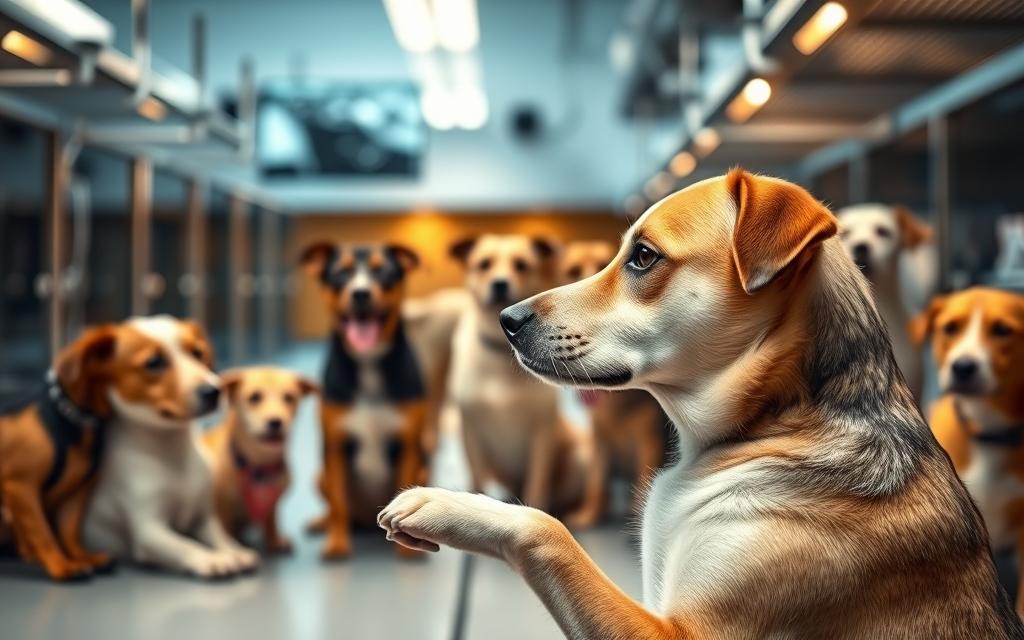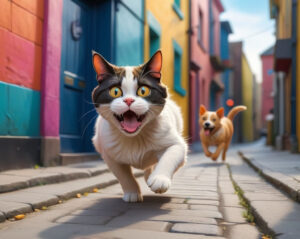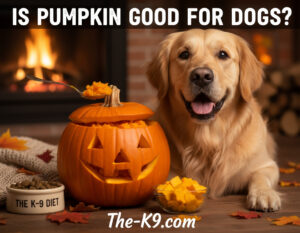
Is my Dog a Racist? Experts say dogs don’t have racial biases. But, they can react in ways that seem discriminatory.
Dogs are not born with prejudices. Their reactions might look like racism, but it’s more complex. It’s about their socialization, early experiences, and environment.
Pet prejudice isn’t in a dog’s DNA. Canine racism comes from limited social exposure and how they learn from humans. Their responses are usually based on fear, unfamiliarity, or learned behaviours.
Dogs are very good at reading social cues. They pick up on what their owners and surroundings say. This means their seemingly biased behavior is about communication and understanding, not true discrimination.
Experts stress the need for early socialization and diverse experiences. By exposing dogs to different people, sounds, and places, owners can help them become confident and balanced. This helps them see beyond perceived differences.
- Understanding Perceived Racial Bias in Dogs
- IS MY DOG A RACIST?
- The Impact of Owner's Behaviour on Dog's Reactions
- The Critical Role of Early Socialization
- Fear vs. Prejudice: Understanding Your Dog's Reactions
- The Importance of Diverse Social Exposure
- How Past Traumatic Experiences Shape Dog Behaviour
- Breaking Down Dog Behaviour Myths
- Training Solutions for Reactive Behaviour
- FAQ : Is my Dog a Racist?
Understanding Perceived Racial Bias in Dogs
Dogs are complex social creatures with amazing abilities to understand and interact with humans. Recent research in dog behaviour science shows interesting insights into how dogs see and react to human differences.
Canine social preferences are not based on racial characteristics. They are rooted in early socialization experiences. A dog’s comfort and reactions to different people depend a lot on their exposure during critical developmental stages.
The Science of Canine Social Perception
Dogs process human differences through multiple sensory channels:
- Scent recognition
- Vocal tone and pitch
- Body language interpretation
- Past interaction experiences
How Dogs Interpret Human Diversity
Researchers like Dr. Alexandra Horowitz have shown that dogs mainly respond to individual human behaviours rather than physical characteristics. Their social preferences develop through:
- Repeated positive interactions
- Consistent social exposure
- Owner’s emotional cues
- Contextual learning environments
Impact of Early Socialization
Early socialization is key in shaping a dog’s comfort with diverse human interactions. Puppies exposed to varied social experiences between 3-14 weeks develop more adaptable and confident behaviour patterns.
Understanding these nuanced aspects of dog behaviour helps owners create positive, inclusive environments. These environments support their pet’s social development.
IS MY DOG A RACIST?
Dog racial bias is a complex and sensitive topic. It needs careful understanding. Research shows dogs can act in ways that seem discriminatory. But, these actions usually come from deeper psychological reasons, not intentional prejudice.
Canine discrimination often comes from environmental factors and past experiences. Dogs form social preferences based on early socialization, familiar scents, and visual cues. Studies show interesting patterns in how dogs interact with different human groups.
- Early exposure determines dog social comfort
- Unfamiliar appearances can trigger cautious responses
- Dogs primarily react to perceived threat levels
Scientific research shows dogs are more likely to react to unfamiliarity than racial characteristics. Their reactions might include:
- Increased alertness
- Hesitation or backing away
- Subtle body language changes
What seems like racial bias is often fear, lack of diverse social experiences, or mirroring their owner’s unconscious behaviours. Professional dog trainers say targeted socialization can greatly reduce these reactions.
Understanding your dog’s behaviour takes patience, observation, and professional guidance. Knowing the reasons behind seemingly discriminatory actions helps create better interactions for dogs and humans.
The Impact of Owner’s Behaviour on Dog’s Reactions
Dogs are very good at reading human emotions and actions. Research by expert Charlotte Duranton shows how much owners influence dogs. This influence affects how dogs interact with others.
Social Referencing in Canine Behaviour
Dogs watch their owners for emotional clues. This helps them understand social situations. Small signals from owners can change how dogs react to strangers.
- Dogs watch their owners’ facial expressions
- They interpret body language and tone of voice
- Unconscious owner signals can trigger specific responses
How Dogs Mirror Their Owner’s Emotions
The bond between dogs and owners is strong. Emotional contagion lets dogs feel and show their owner’s feelings. If an owner is anxious, the dog might act the same way.
Understanding Unconscious Owner Signals
Many owners don’t realize the signals they send. Small changes in breathing or body language mean a lot to dogs. Knowing these cues helps avoid bad behaviours.
| Owner Behaviour | Potential Dog Response |
|---|---|
| Tense Body Language | Increased Anxiety or Defensiveness |
| Calm and Relaxed Demeanour | Reduced Stress and Open Social Interactions |
The Critical Role of Early Socialization
Puppy socialization is key for a dog’s healthy growth. The first three months are vital. During this time, puppies learn from various experiences that shape their behaviour and emotions.
The American Veterinary Society of Animal Behaviour highlights the need for early exposure to different things. Puppies that get well-socialized tend to grow up confident and well-adjusted.
- Introduce puppies to various people, sounds, and environments
- Expose dogs to different ages, ethnicities, and appearances
- Create positive interactions with controlled, safe experiences
Developing a dog’s social skills needs careful planning. Experts suggest starting slow to avoid overwhelming them. This helps build their confidence.
| Socialization Stage | Key Focus Areas | Recommended Approach |
|---|---|---|
| 0-3 Months | Diverse Human Interactions | Controlled, Positive Experiences |
| 3-6 Months | Environmental Exposure | Gradual Introduction to New Stimuli |
| 6-12 Months | Social Skills Refinement | Structured Socialization Classes |
Careful socialization helps prevent fear-based reactions and supports healthy psychological development in dogs. Veterinarians say early positive experiences are crucial. They help avoid behavioural problems later on.
Fear vs. Prejudice: Understanding Your Dog’s Reactions
Dog behaviour can be complex, especially when it comes to fear and aggression. What might seem like prejudice is often a deeper manifestation of dog fear behaviour. This is rooted in past experiences and survival instincts.
Dogs see the world through their senses. A bad experience can lead to long-lasting reactive dog triggers. These shape their future interactions. Understanding these nuanced responses helps owners address canine aggression more effectively.
Signs of Fear-Based Behaviour
Recognizing fear in dogs requires careful observation. Key indicators include:
- Tucked tail and lowered body posture
- Excessive panting or trembling
- Avoiding eye contact
- Growling or barking defensively
- Attempting to escape or hide
Differentiating Between Fear and Aggression
Fear and aggression might look similar, but they stem from different emotional states. Fear-based reactions are typically defensive, while true aggression involves proactive threatening behaviours.
Common Triggers for Reactive Behaviour
Dogs develop reactive behaviours through various experiences. Potential triggers include:
- Loud noises
- Unfamiliar people or environments
- Previous traumatic encounters
- Lack of early socialization
- Physical discomfort or pain
Professional training and patient socialization can help dogs overcome these reactive responses. This transforms fear into confidence.
The Importance of Diverse Social Exposure
Creating positive social experiences is key for a dog’s social confidence. Dog socialization techniques help dogs adjust well to different people and places.
Exposure therapy for dogs means slowly introducing them to new things in a positive way. Studies show that dogs who meet many people and places are less scared of new things.
- Start socialization early in a puppy’s life
- Introduce dogs to people of different ages, appearances, and backgrounds
- Use positive reinforcement during social interactions
- Create calm, supportive environments for new experiences
Here are some important strategies for dog socialization:
- Controlled environments: Begin in quiet, safe spaces
- Gradual introduction: Slowly increase complexity of social interactions
- Reward-based learning: Use treats and praise to build positive associations
Professional dog trainers suggest a consistent, patient approach. Regular, positive interactions with various people can greatly reduce anxiety or reactive behaviours.
By using thoughtful socialization techniques, dog owners can help their pets develop healthy, adaptable social skills for life.
How Past Traumatic Experiences Shape Dog Behaviour
Dogs, like humans, can carry deep emotional scars from traumatic experiences. A single negative encounter can profoundly impact a dog’s behavioural patterns. It can trigger fear responses that last long after the initial incident. Understanding dog trauma recovery is crucial for helping our canine companions heal and regain emotional balance.
Impact of Negative Encounters
Canine behavioural rehabilitation starts with recognizing how traumatic events shape a dog’s perception of safety. Dogs may develop specific triggers that remind them of past painful experiences. This can lead to reactive behaviours such as:
- Excessive barking
- Aggressive posturing
- Withdrawal or extreme anxiety
- Involuntary physical responses
Processing Trauma in Dogs
Overcoming dog fear requires patience and strategic intervention. Dogs process trauma differently from humans. They often store emotional memories that can resurface unexpectedly. Professional behaviourists understand that each traumatic experience creates a unique psychological landscape within a dog’s mind.
Recovery and Rehabilitation Methods
Effective dog trauma recovery involves several key strategies:
- Desensitization training to reduce fear responses
- Consistent positive reinforcement
- Creating safe, controlled exposure environments
- Professional behavioural therapy
Successful canine behavioural rehabilitation demands commitment, understanding, and a compassionate approach. It helps dogs rebuild their sense of security and trust.
Breaking Down Dog Behaviour Myths
Dog behaviour is often misunderstood, leading to many misconceptions. These misconceptions affect how we see our furry friends’ world. To understand pet behaviour, we must debunk canine psychology myths.
Many believe dogs can be discriminatory. But, dog behaviour facts show a more complex truth. Dogs don’t have the same prejudices as humans. Their reactions come from psychological and environmental factors.
- Fear responses are often mistaken for intentional bias
- Lack of early socialization can create specific behavioural patterns
- Negative past experiences significantly influence dog reactions
Canine psychology is based on survival instincts and learned experiences. When dogs seem to react differently, it’s usually because of:
- Unfamiliar body language
- Unusual scents
- Previous traumatic encounters
- Limited exposure to diverse social situations
The truth is, dogs don’t make choices about who they like or dislike. Their reactions are complex emotional responses. These are shaped by their life experiences and the world around them.
Training Solutions for Reactive Behaviour
Fixing reactive dog behaviour needs a smart plan. Experts say to start with positive methods. These help your dog feel more confident and less anxious around new people or places.
Training for reactive dogs starts with safe, short meetings. These help dogs learn to interact without getting too stressed. Give them treats and calm words when they stay calm, then slowly make the meetings longer and more complex.
Keeping your dog safe is key. Use barriers, keep a safe distance, and stick to a routine. Dog behaviour experts say to make a plan that fits your dog’s needs. This helps them feel better and more secure.
Getting help from a certified trainer is a big plus. They teach you how to understand your dog’s signals. They also create training plans that help your dog feel more confident and calm in different situations.
FAQ : Is my Dog a Racist?
Can dogs actually be racist?
Dogs are not racist by nature. They might act differently due to lack of socialization or fear. Their reactions are often a result of limited exposure and learned behaviours.
How do dogs develop reactions to different types of people?
Dogs learn about people through early socialization and experiences. Being exposed to various people and environments between 3-16 weeks is key. This shapes their comfort and reactions to others.
Why does my dog seem uncomfortable around certain people?
Dogs might feel uneasy due to fear, unfamiliarity, or past bad experiences. They react based on what they see, hear, or smell. This is not about racial prejudice.
Can a dog’s behaviour be influenced by its owner’s attitudes?
Yes, dogs are very attuned to their owners’ emotions. They pick up on subtle cues like body language and tension. This can affect how they interact with different people.
How can I help my dog become more comfortable with diverse people?
Start by gradually introducing your dog to people of different backgrounds. Use treats and calm interactions to build confidence. This helps reduce fear and builds positive associations.
What are signs that my dog is experiencing fear versus aggression?
Fear signs include trembling, avoiding eye contact, and trying to escape. Aggression shows as growling, raised hackles, and stiff body. Knowing the difference is key to helping your dog.
Can past trauma affect a dog’s behaviour towards certain people?
Yes, past trauma can deeply affect a dog’s behaviour. Professional help using desensitization and counter-conditioning can help them overcome these issues.
How early should I start socializing my puppy?
Socialize your puppy between 3-16 weeks. The American Veterinary Society of Animal Behaviour (AVSAB) suggests introducing them to various experiences early. This balances health with developmental needs.
What training methods work best for addressing reactive behaviour?
Positive reinforcement is the best approach. Use reward-based training, gradual exposure, and create positive associations. This helps build confidence and reduces fear.
Should I consult a professional if I’m concerned about my dog’s behaviour?
Yes, a certified dog behaviourist or trainer can help. They create a plan tailored to your dog’s needs. This is especially helpful for persistent or challenging behaviours.











